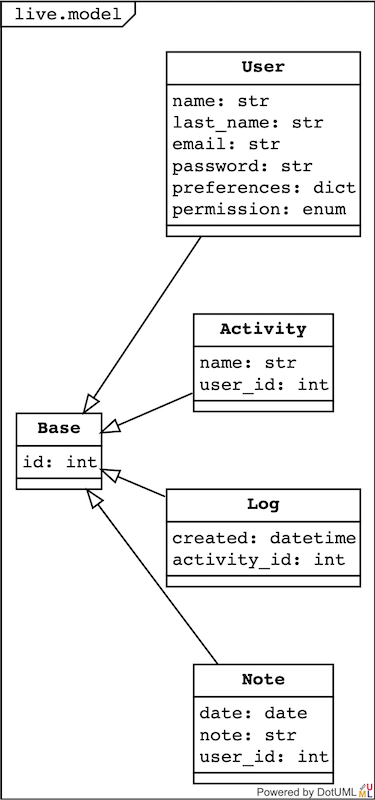[ad_1]

Callooh! Callay!¹ SqlAlchemy 1.4 now helps asyncio. The work they’ve accomplished is spectacular.
For years I’ve been utilizing SqlAlchemy with Twister and have needed to resort to a ThreadPoolExecutor to make my queries run in parallel. No extra. Now will probably be async all the way in which all the way down to the final turtle. Except, in fact, you resolve to make use of the ORM. Then greenlets will remedy all of your issues. However allow us to step again and focus on the editorial resolution you make as you design an API.
To operate or class?
The primary editorial resolution is commonly a matter of behavior. Some I do know wouldn’t permit the overhead of lessons — that’s all inheritance and pointless complexity. They’re fallacious among the time. A chic class hierarchy can typically ease the ache of tips on how to navigate the graph of code earlier than you. At different occasions a bunch of features will just do fantastic.
Take for instance the convenience of studying Java. The whole lot was a category and all the things required the implementation of an interface. Then you definitely take a look at a python bundle — what fashion did this wally use? purposeful, lessons or a — oh, good grief. Documentation helps, however there are occasions once I couldn’t determine what they anticipated with out studying the supply code.
Rant over, let’s take a look at our choices. We’re attempting to realize a easy timesheet utility. I’ve chosen to mannequin it as follows:

Why? As a result of a person will log their time utilization and do this all through the day. Solely a person can log time and solely a person can edit their time. We’ve remoted the actions to a person’s namespace; actions aren’t shared. So a Log is only a composition of a timestamp and an exercise. The person can even save notes a few day.
So how can we generate views on this mannequin? Are we going to reveal a CRUD like interface or assume a context? Let’s take a look on the log view first:
First, who’s the present logged in person? Then let’s marshal some dates, which perhaps None and could also be poorly formatted. I let python-dateutil remedy this drawback for me. Then we get to our question. We’re utilizing the brand new 1.4 Session and choose assertion. First, it’s context conscious. It closes because it leaves the context, and as a substitute of passing in an array of selectables, we use the *args to move them in. It’s clear and intuitive. We be a part of, add a the place and order_by. This cursor then has an all() methodology, and since every row has an gadgets interface, we will deconstruct them into the arguments to our dto constructor. Good grief man, it appears to be like like SQL. Effectively, is that not the purpose – to put in writing sql in your python.
Let’s now take a look on the equal question in an ORM world.
You may see the question is barely extra compact and that our mannequin class is aware of concerning the totally different views it helps. There’s some complexity in utilizing the choices for the choose – what loading technique to make use of? However wait – there is no such thing as a await. That’s as a result of we’re utilizing the greenlet abstraction constructed into SQLAlchemy 1.4 referred to as: session.run_sync. It permits us to deal with our asynchronous mannequin as if it had been the previous synchronous fashion. Now right here is one other enjoyable extension to the library:
Our Log class declares a meta knowledge __table__, which permits use to make use of each the desk within the expression language and the mannequin within the ORM! So when you don’t want the overhead of the ORM, by move it. In order for you the ORM and its session cache – then use it. The sheer effort to convey these worlds right into a seamless metaphor is astounding – however the documentation remains to be fragmented and impenetrable.
So the reply is each. Outline your schema with desk, increase it with a mannequin and write features that make the most of each. Why features? As a result of we’re constructing an api.
Of context and connections
The context is an enriched house in python beginning with 3.7. Our contextvars now use each thread.native and process.native. So we will put the present person right into a ContextVar and whether or not we’re working a process or working in a ThreadPoolExecutor every time we enchantment to the variable will probably be appropriate. That is additionally what occurs with Session.
We are able to configure this async_session_factory from our surroundings variables:
Or, once we are testing, decide them up from our setup.cfg:
You may ask, what’s Config and command? It’s Alembic, and we’re getting ready the database in a pytest fixture, kind of like django.unittest. Through the use of alembic for our database migration we get testability in addition to schema migration, and it’s pushed from the tables.metadata. Alembic helps async with a brand new template. I abuse the system by placing the scripts listing into my python bundle and renaming the alembic.ini to setup.cfg. In at this time’s world of .cfg and .toml it’s onerous to know the place all of the configuration ought to stay. I’ve not been capable of eliminate the setup.cfg, though setup.py is gone. pyproject.toml is superb, however nobody has been capable of type out who does what and the place. I’m positive it’ll come clear ultimately, however for the second I nonetheless want a setup.cfg, a format that alembic can perceive, and a pyproject.toml as a result of black received’t look in a .cfg. Thoughts you that is just for testing. In manufacturing, most configuration is loaded from atmosphere variables or command line arguments.
So now we will check our tables and mannequin and we will initialise our database. So let’s check one thing.
Testing
To check asynchronous code you’ll want an extension to pytest. I’ve used pytest.torn-async and pytest.asyncio. As a result of we’re not working with twister but, I’ll use pytest.asyncio. It expects a configuration and can look into your setup.cfg – add this:
[tool:pytest]
asyncio_mode = strict
In any other case it’ll complain with a warning about depreciation. Now we’re set to go. Let’s write a register operate to register a person:
We do an insert, and a choose, with a purpose to decide up the defaults from the database. There’s a pattern to make use of returning which might make this pointless, however my backends (mysql & sqlite)² don’t assist it. I’ve abstracted the choose as it’s utilized in a number of locations. And I raised the IntegrityError – which ought to presumably be abstracted. We’ve additionally encrypted the password – that ought to possible be salted. However we will check this:
Our init_db fixture simply raids setup.cfg and downgrades and upgrades the database. The asyncio decorator lets pytest.asyncio know that we’re to be run asynchronously. And we will check the returned class accommodates the defaults we didn’t specify. We additionally can not register twice.
So, if register had been a category methodology on mannequin.Consumer, what would our check appear to be?
We’ve written a synchronous operate inside our check and referred to as session.run_sync. So have we answered the query? Is it fashions or tables? features or lessons? Nonetheless each.
Hopefully, you possibly can see the place that is going. We’re construct an utility the place a person goes to be the UML actor on our system. That person goes to log actions — we don’t have to know the exercise id, the database major key, simply the textual content they’ve used.
REST makes endpoints and CRUD exposes the implementation of our database to our actors. Collectively they make a lazy abstraction of our fashions. In that world one would wish to create an Exercise earlier than having the ability to create a Log. A Log can be:
{id, activity_id, created}
or worse:
{id, exercise:{id, title, person:{id, title}}, created}
The context of an api simplifies our outcomes and allows us to reveal a purposeful interface. Every operate returns a graph, however it’s not only a rip of the database mannequin. So our log is {id,exercise, created}.
So what does this legendary log operate appear to be:
That is the mannequin model of log. It’s extra compact than the purposeful model. We create a now, move it with the present person and the equipped activity_name into class that we add to a session and commit! Then we with rpc.broadcast we inform all my spouse’s units that she’s added a log and even the one she used so as to add it. If there have been any error just one system – the caller – would deal with it, in any other case they’re all equal and related!
Should you’ve learn this far you’ll wish to see the code. It’s on Replit³, together with a working model. This makes use of the rpc I described in Distant Procedures, Please.
To Conclude
Fashions are about state and performance — encapsulation. They make it much less error liable to handle the relations in a graph. This may be seen by there being nothing however relationships added to the mannequin of a desk — plus some views in fact. However we stay in a purposeful world — a world of distant procedures. And sometimes the comprehensible price of an ORM will not be wanted. If you realize the sql, map it with the expression language and await your pleasure.
The authors of SQLAlchemy deserve nice reward for the work they’ve accomplished. I couldn’t be happier utilizing their bundle to map my method. I’ve been utilizing 1.4 for a 12 months now and have accomplished nothing however chortle with pleasure. Mixed with twister and vue, one can do absolutely anything. A vorpal¹ blade certainly.
[ad_2]
Source_link
